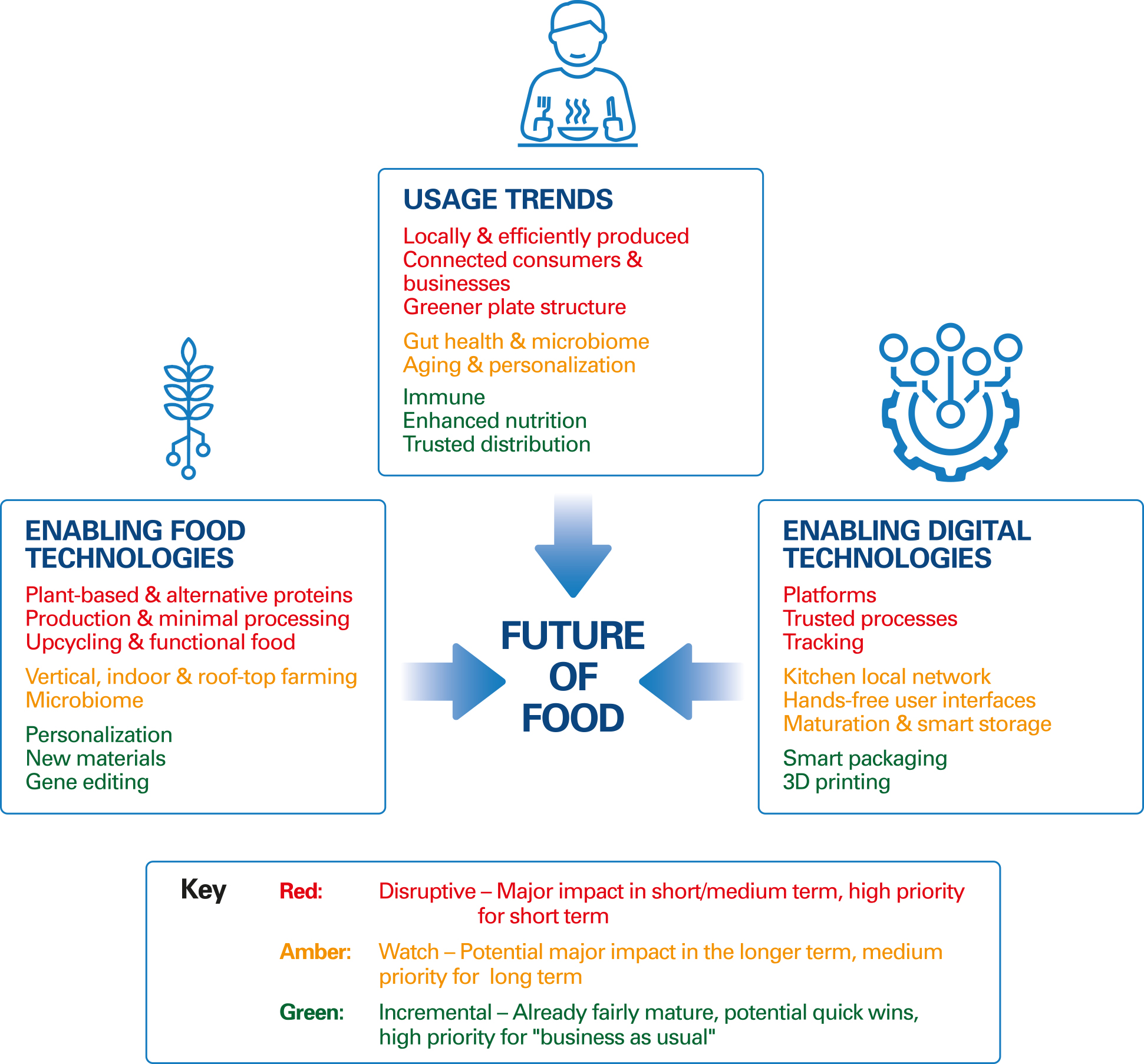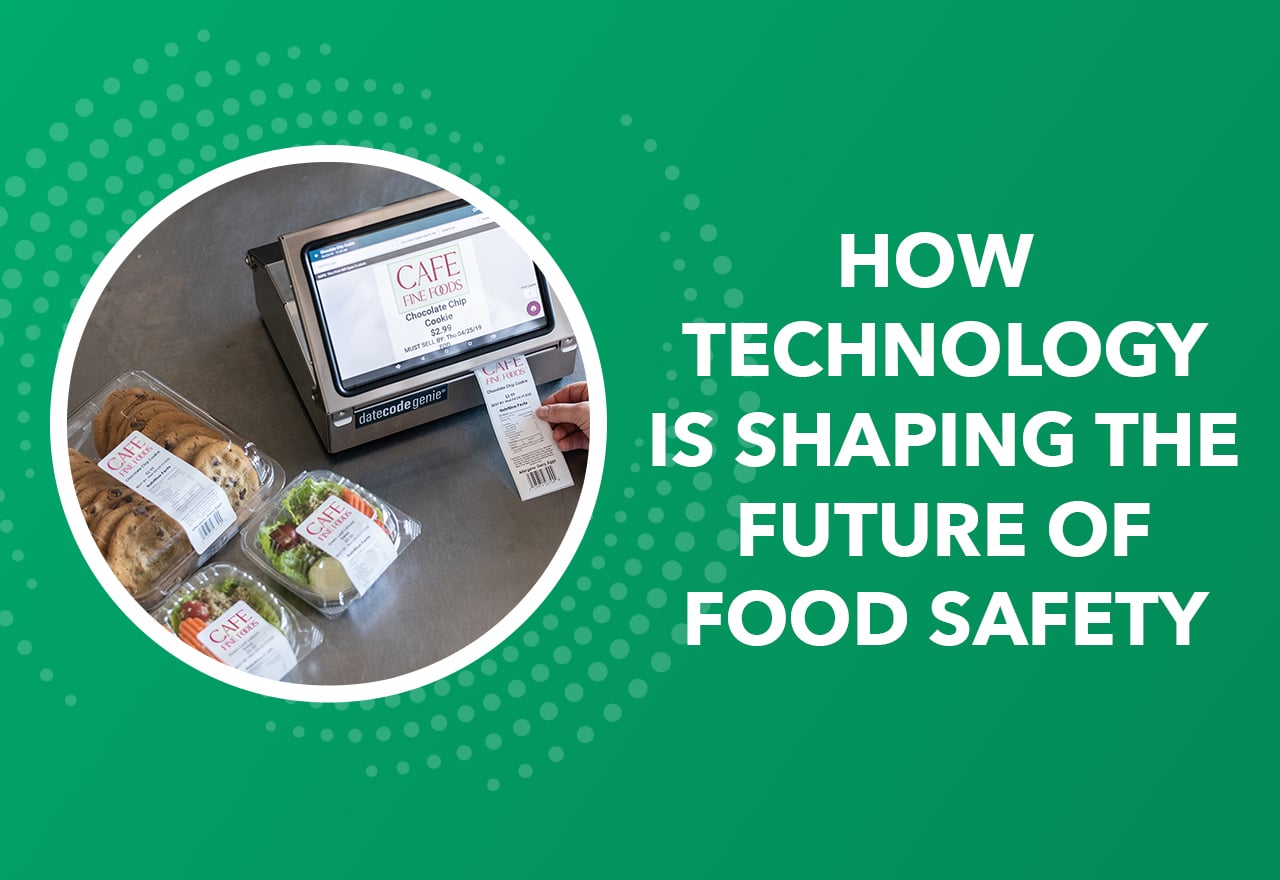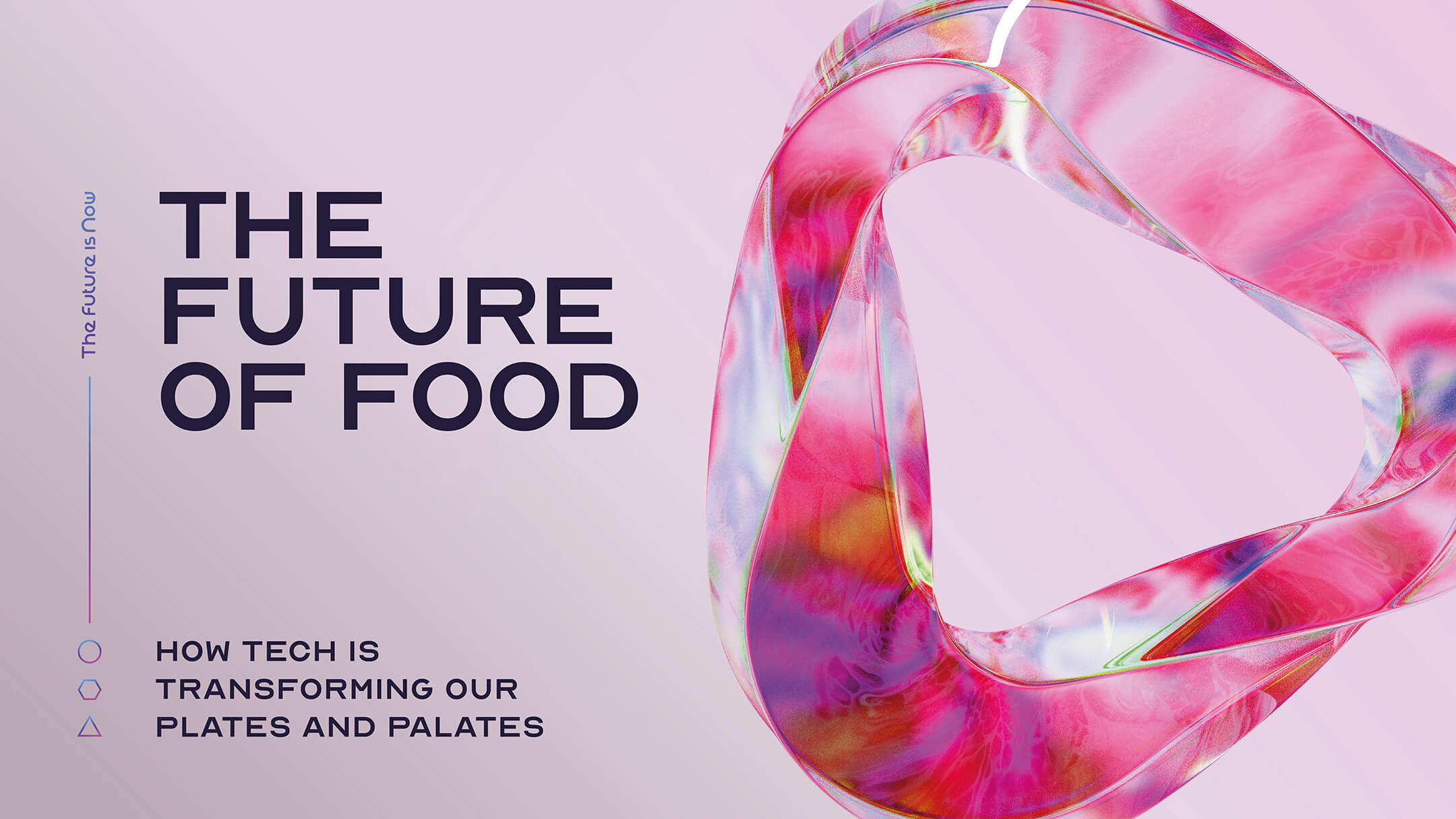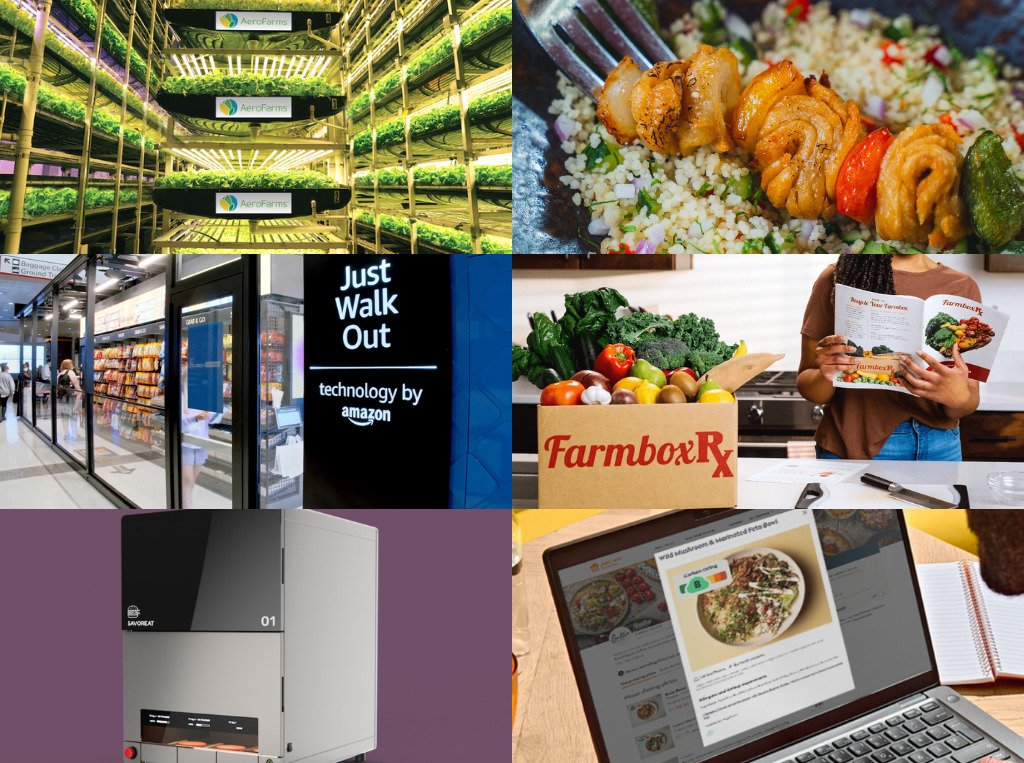
Introduction
Current State of the Food Industry
In recent years, the food industry has undergone significant transformations, driven by evolving consumer preferences and technological advancements. With an increasing demand for transparency, sustainability, and convenience, organizations in the food sector are adapting to meet consumer expectations. For instance, many companies are embracing organic offerings and plant-based alternatives, reflecting a shift toward healthier lifestyles. According to a recent report, the global market for plant-based foods is expected to reach $74.2 billion by 2027, showcasing this trend’s undeniable growth.
Additionally, challenges such as food safety, waste management, and labor shortages are urging the industry to rethink traditional processes.
Overview of Future Technologies in Food Industry
Looking ahead, the intersection of technology and food production appears promising. Innovations poised to revolutionize this sector include:
- Automation: Streamlining production lines with robotic assistance to enhance efficiency.
- AI and machine learning: For predictive analytics and optimizing farming practices.
- Blockchain: Ensuring traceability and enhancing consumer trust in food safety.
These technologies not only address current challenges but also open exciting avenues for efficiency and sustainability. As we delve deeper into how future tech is shaping the food industry, it becomes clear that embracing these advancements is no longer optional but essential for thriving in a competitive landscape.

Impact of Technology on Food Production
Automation in Food Processing
As the food industry embraces a wave of technological innovations, automation in food processing stands out as a game changer. With the repetitive and labor-intensive nature of food production, companies are harnessing automation to streamline their operations. For example, automated machines can handle tasks ranging from sorting and packaging to cooking.
Benefits of automation in food processing include:
- Increased Efficiency: High-speed machines can operate continuously, minimizing downtime.
- Consistency: Automation ensures uniformity in product quality, leading to enhanced consumer satisfaction.
- Cost Reduction: Lower labor costs and reduced waste contribute to overall cost savings.
Some food companies report productivity increases of up to 30% after incorporating automated processes into their facilities.
Role of Robotics and AI in Agriculture
Beyond the factory floor, the application of robotics and AI in agriculture is redefining the way food is grown. Imagine drones surveying fields, collecting data to inform planting strategies, or robotic harvesters operating steadily during peak seasons.
- Precision Farming: AI algorithms analyze data and provide farmers with insights on soil health, optimal planting times, and efficient resource usage.
- Labor Shortages: Robots help alleviate the issue of labor shortages, especially in physically demanding roles.
Personal anecdotes from farmers reveal how adopting these technologies has not only boosted yields but also improved work-life balance. As we continue to explore how future tech is shaping the food industry, automation and AI are clearly setting the stage for a more productive and sustainable agricultural landscape.

Enhancing Food Safety and Quality
Blockchain in Food Traceability
As we delve deeper into how technology is enhancing food safety and quality, blockchain technology emerges as a revolutionary force. Its ability to create an immutable ledger makes it an ideal tool for tracking food products from farm to table. Imagine a scenario where every step a mango takes—from harvest to processing to supermarket shelves—is recorded on a blockchain. This level of traceability builds unparalleled transparency for consumers.
Key benefits of utilizing blockchain in food traceability include:
- Enhanced Transparency: Consumers can access information about the origin and handling of their food, fostering trust.
- Quick Response to Contamination: In the event of a food safety scare, blockchain enables faster identification and recall of contaminated products.
- Reduced Fraud: By verifying the authenticity of food products, blockchain helps combat food fraud.
Use of Sensors for Monitoring Food Quality
Another exciting development is the integration of sensors in food quality monitoring. These high-tech devices are designed to assess everything from temperature to humidity levels during food storage and transportation.
For example, a friend in the supply chain industry recently adopted temperature sensors for their refrigerated trucks. This allowed them to identify temperature fluctuations that could lead to spoilage, resulting in a significant reduction in waste.
- Real-time Monitoring: Sensors provide instant alerts when food quality standards are at risk.
- Data-Driven Decisions: Insights gathered from sensors help optimize storage and handling practices.
These technologies not only enhance food quality but also foster a more trustworthy food supply chain, illustrating just how future tech is shaping the food industry for the better.

Sustainable Practices in Food Tech
Vertical Farming and Urban Agriculture
Continuing our exploration of how technology is shaping the food industry, sustainable practices are stepping into the spotlight. Vertical farming and urban agriculture are prime examples of innovative approaches that allow food production to flourish in urban settings. Imagine a skyscraper filled with lush greenery, where fresh produce is grown in stacked layers under LED lights—this is no longer science fiction!
The benefits of vertical farming include:
- Space Efficiency: With the world’s population projected to reach 9 billion by 2050, vertical farms can optimize limited urban spaces.
- Reduced Transportation Emissions: Growing food closer to consumers minimizes the carbon footprint associated with transportation.
- Year-Round Production: Controlled environments allow for consistent crop yields, regardless of external weather conditions.
Biodegradable Packaging Solutions
Another exciting development in the realm of sustainable practices is the growing use of biodegradable packaging. A close friend who runs an organic food market shared how transitioning to compostable packing materials significantly reduced their environmental impact while appealing to eco-conscious consumers.
Key advantages of biodegradable packaging include:
- Reduced Waste: Unlike traditional plastics, biodegradable materials break down naturally, minimizing landfill overflow.
- Consumer Demand: Today’s customers increasingly seek brands that prioritize sustainability, making eco-friendly packaging a competitive edge.
As the food industry embraces these sustainable technologies, it not only addresses immediate environmental concerns but also paves the way for a greener future, demonstrating just how vital innovation is in creating lasting change.

Personalized Nutrition and Food Innovation
3D Printed Food
As we pivot towards the exciting realm of personalized nutrition and food innovation, 3D printed food captures the imagination. This cutting-edge technology allows chefs and food scientists to create customized meals tailored to individual preferences and dietary requirements. Picture a pizza where each ingredient is printed layer by layer to craft a unique shape and flavor profile!
Some compelling reasons why 3D printed food is gaining traction include:
- Customization: Individuals can specify their nutritional needs, whether it’s for weight loss, muscle gain, or other health goals.
- Sustainability: 3D printing minimizes food waste by using only the ingredients needed for each print.
- Creative Presentation: This technology opens up a world of artistry, turning ordinary dishes into visually stunning creations.
Nutrigenomics and Customized Diets
In tandem with 3D printing, nutrigenomics is revolutionizing how we approach diets. This branch of science studies the relationship between genetics and nutrition, revealing how personalized dietary choices can influence health outcomes.
For example, a family member recently had their DNA analyzed to discover which foods would best support their overall wellness. The results led to tailored meal plans emphasizing foods that boost metabolism and improve heart health.
Key benefits of nutrigenomics include:
- Personalized Insights: Individuals can make informed dietary choices based on genetic predispositions.
- Preventive Health: Tailoring diets to genetic profiles helps in preventing chronic illnesses.
As we embrace these innovations, the future of personalized nutrition promises not only improved health but also a more intimate connection between individuals and their food, illustrating how future tech is shaping the food industry for everyone.

Addressing Food Security Challenges
Precision Agriculture Techniques
Continuing our exploration of how future tech is shaping the food industry, addressing food security challenges stands as a pressing need worldwide. One effective approach is the implementation of precision agriculture techniques. This innovative farming method leverages data analytics, GPS technology, and IoT devices to maximize crop yields and minimize environmental impact.
Imagine walking through a field equipped with drones that survey crops, analyzing soil moisture levels and predicting the best times for planting and harvesting. It’s not just a dream; it’s happening now!
Key benefits of precision agriculture include:
- Resource Optimization: By applying water, fertilizers, and pesticides only where needed, farmers can reduce waste and lower costs.
- Increased Crop Productivity: Tailored approaches boost yields and ensure food supplies meet growing demand.
- Environmental Sustainability: Less chemical runoff means healthier ecosystems and communities.
Food Preservation Technologies
Another critical element in tackling food security challenges is advancing food preservation technologies. With a personal interest in sustainability, I’ve witnessed firsthand how innovative methods can extend the shelf life of perishable goods. For instance, a local grocery store began employing high-pressure processing (HPP) to preserve fresh juices without preservatives, while maintaining flavor and nutrients.
Benefits of modern food preservation include:
- Reduced Food Waste: Extending product shelf life helps decrease the amount of food thrown away.
- Increased Access: Preserved foods can be distributed widely, reaching communities that might struggle to access fresh produce.
As these technologies and techniques emerge, they not only address the immediate concerns of food security but also pave the way for a resilient food system capable of feeding future generations.

Consumer Trends and Tech Adoption in Food Industry
E-commerce and Food Delivery Platforms
As we delve deeper into consumer trends and tech adoption within the food industry, it’s evident that e-commerce and food delivery platforms are reshaping how we access groceries and meals. The pandemic accelerated this shift, and today, people increasingly seek the convenience of having food delivered to their doorsteps.
I still remember the excitement I felt during those early days of online grocery shopping, where I could browse items from various stores in the comfort of my home.
Key trends in e-commerce and food delivery include:
- Subscription Services: Meal kit services and fresh produce deliveries offer personalized options and convenience.
- Local Sourcing: More consumers prefer to order from local farmers or businesses, supporting their communities while ensuring fresher options.
- User-Friendly Apps: Enhanced technology in delivery apps makes the ordering process seamless, ensuring a positive customer experience.
Smart Kitchen Appliances and IoT Integration
Simultaneously, the adoption of smart kitchen appliances is transforming home cooking. Imagine being able to preheat your oven remotely or receive notifications when your food is ready—all thanks to IoT integration.
- Efficiency: Smart appliances often come with energy-saving features, helping cooks save time and reduce utility bills.
- Recipe Guidance: Many devices now include built-in recipe databases that adapt cooking times and temperatures to ensure perfect results.
- Remote Monitoring: With apps connected to your kitchen gadgets, you can monitor and control cooking processes from any location.
By embracing these trends, consumers are not only enhancing their culinary experiences but also fostering a more connected and tech-driven food industry that mirrors our rapidly evolving lifestyle.

